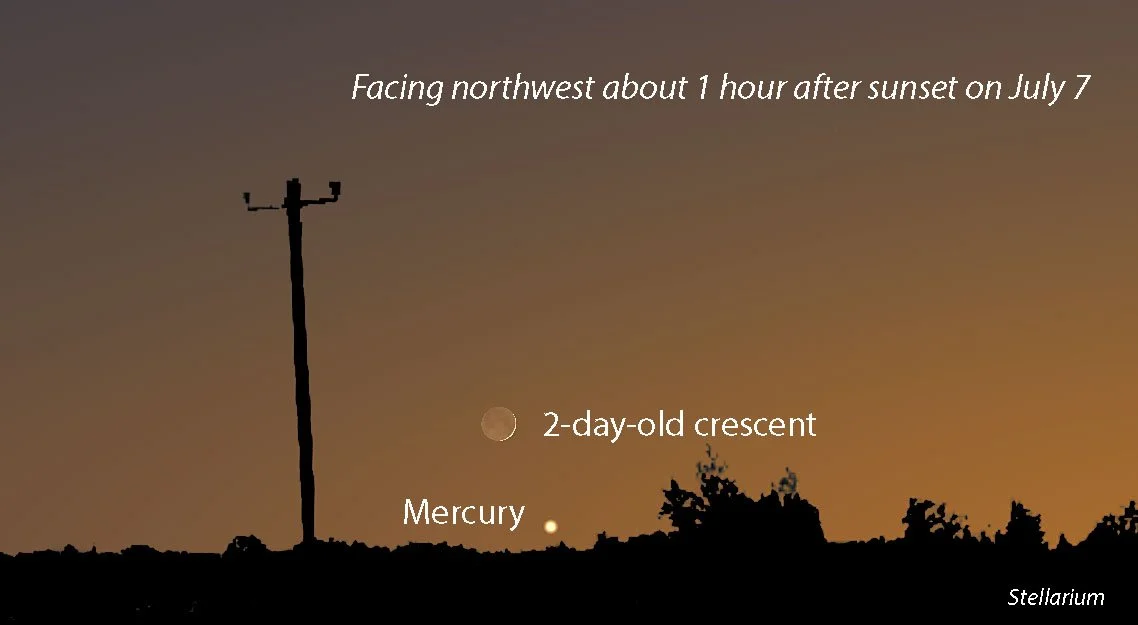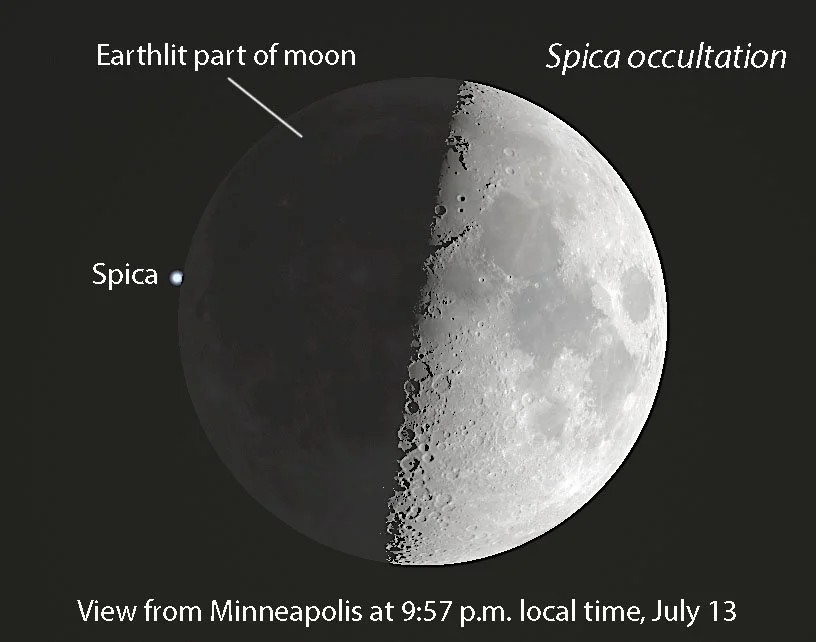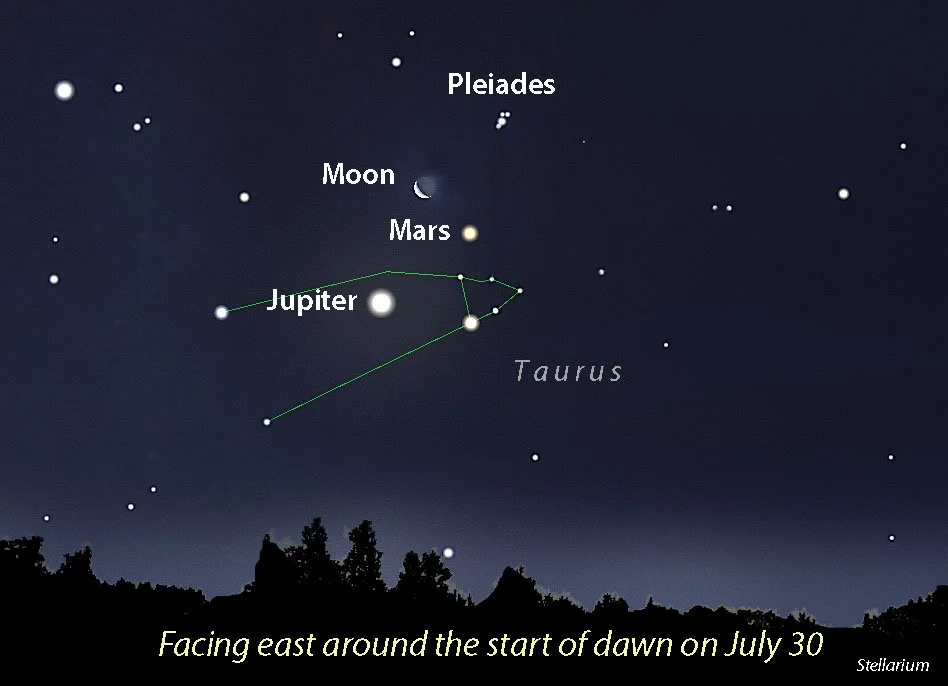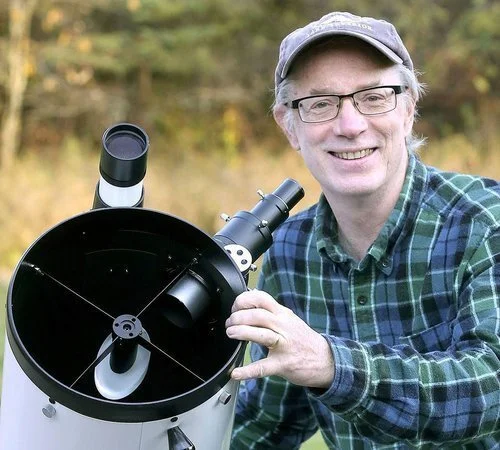July 2024 Night Sky Calendar
Mid-summer can be the most challenging time of year to be out at night. Not only do we have to wait till late for the sky to get dark but the mosquitos are unrelenting. As always, if you’re prepared and take the right measures — napping earlier in the day and dressing to expose as little skin as possible — you’ll have a great experience under the stars.
In July, all three morning planets — Jupiter, Mars and Saturn — continue to climb higher into a dark sky. At dusk, Mercury briefly slips into view but the twilight glow will make it a challenge to spot. Ditto for Venus, which will finally show its face at month’s end.
The biggest event is a disappearing act called an occultation. On the evening of July 13, the half-moon will cover Virgo’s brightest star Spica for roughly an hour, depending on your location. The suddenness of the star’s disappearance at the dark edge of the moon must be seen to be believed. It happens swiftly for three reasons — the star is little more than a point of light and the moon is moving at 2,170 miles per hour. Also, because the moon has no atmosphere the star doesn’t fade as the moon approaches — it’s there and then it isn’t!
Our featured constellation this month is Draco the Dragon which winds between the two Dippers. The creature’s tail starts just off the bucket of the Big Dipper and loops up and around the Little Dipper, ending at the head, located at the top of the sky. Draco represents the mythological dragon Ladon, who guarded Hera’s (wife of Zeus) golden apple tree.
Download the free Stellarium Mobile app for Android and iPhone to help you find and identify the planets and constellations. Do a Google search then install the app, set it in night mode (red screen) and point your phone skyward. For a free July sky map and calendar go to www.skymaps.com/downloads.htm
Events (a.m. indicates the event happens in the early morning sky):
July 1 (a.m.) – Waning crescent moon appears above the planet Mars at dawn.
July 1-10 – Mercury visible in binoculars very low in the northwestern sky 45 minutes to an hour after sunset.
July 3 (a.m.) – Very thin lunar crescent shines above Jupiter low in the northeastern sky at dawn.
July 5 – New moon
July 7-28 – The International Space Station (ISS) will make one pass each evening through mid-month then two or more evening passes from mid-month through late July. It looks like very bright star moving from west to east across the sky. For specific times for your location get the free Spot the Station app in the App Store (iPhone) or on Google Play (Android).
July 7 – The 2-day-old crescent moon hovers about 3.5 degrees above Mercury very low in the northwestern sky an hour after sunset.
July 13 – First quarter moon. Tonight, the moon will occult Virgo’s brightest star Spica. It occurs around 10 p.m. in the Midwest and will be visible in binoculars or a small telescope. For specific times of disappearance and reappearance, look up your city at this link: lunar-occultations.com/iota/bstar/0714zc1925.htm. Times are given in Universal Time (UT). To convert to Eastern Daylight Time (EDT), subtract 4 hours; 5 hours for CDT; 6 hours for MDT and 7 hours for PDT. For example: if the star disappears at 2:50 UT, July 14 UT and you live in the Central Time Zone, subtract 5 hours to get 9:50 p.m. CDT, July 13.
July 17 – Waxing gibbous moon shines to the left of Antares, the bright red supergiant star in Scorpius.
July 21 – Full Buck Moon, named for male deer that shed their antlers this time of year and then regrow them in the coming months. Check your local moonrise time at timeanddate.com/moon
July 24 – Waning gibbous moon shines to the right of Saturn.
July 25-31 – See the Chinese space station Tiangong (Heavenly Palace) cross the night sky. Like the ISS it travels from west to east but it’s generally lower above the horizon and not as bright. Go to heavens-above.com, click the blue Change your observing location link and add your location. Then go back to the main page and click the Tiangong link. Click any of the times shown for a map showing its path across the sky.
July 29-30 – Peak of the Delta Aquariid meteor shower. The moon won’t interfere. For northern hemisphere skywatchers about 15 meteors per hour may be visible emanating from the constellation Aquarius in the southern sky. Best viewing will be after midnight.
July 27 (a.m.) – Last quarter moon. Rises around 1 a.m. and stands approximately due south at sunrise.
July 30 (a.m.) – Waning crescent moon, Mars and Jupiter gather in a compact triangle in the eastern sky at the start of dawn.
July 30-31 – Venus may be visible with binoculars 30-35 minutes after sunset very low in the western sky.
Bob King is an amateur astronomer, author, and passionate educator. He served as a photographer and photo editor at the Duluth News Tribune for 39 years and taught at the UMD planetarium. Bob’s work had a great impact on Voyageurs National Park. To achieve International Dark Sky Park certification, the park was required to host dark sky education events. Through the Night Sky Explorer webinars, the Conservancy was able to fulfill this component and help secure the certification for Voyageurs National Park. We can’t thank Bob King enough for sharing his talents and knowledge with the Conservancy community to support dark sky preservation.







